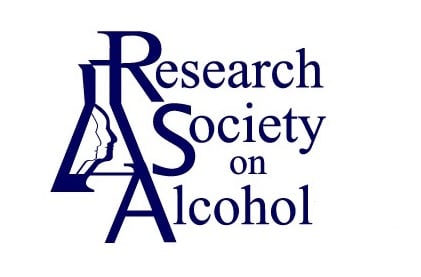Journal list menu
Export Citations
Download PDFs
Issue Information
Articles of Public Interest
In Memoriam
In Memoriam Professor Jean Pierre von Wartburg (1931 to 2017)
- Pages: 1244-1245
- First Published: 25 May 2017
Critical Review
A Quantitative Analysis of Latino Acculturation and Alcohol Use: Myth Versus Reality
- Pages: 1246-1256
- First Published: 14 June 2017
This review investigated how effective measures of acculturation are at predicting drinking behaviors (quantity, frequency, and volume). Results revealed the effects of acculturation on drinking behaviors were relatively small. Sub-analysis found that the association between acculturation and alcohol use in Latinos was greater in women than in men, and that language use was the strongest and most effective predictor of acculturation and drinking behaviors. These findings provide a strong argument against treating acculturation as a uniform process.
Biochemistry, Pharmacology, Physiology and Metabolism
Nalmefene Prevents Alcohol-Induced Neuroinflammation and Alcohol Drinking Preference in Adolescent Female Mice: Role of TLR4
- Pages: 1257-1270
- First Published: 11 May 2017
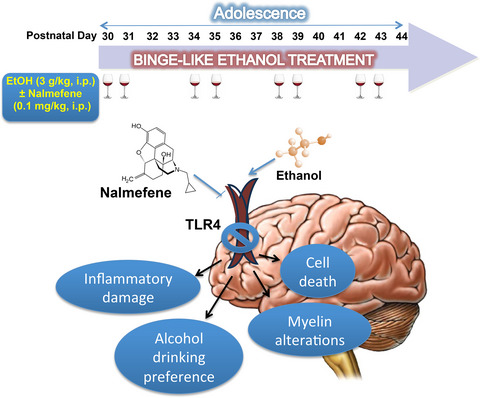
Nalmefene by blocking TLR4 response, abolishes ethanol-induced neuroinflammation, myelin derangements and neural death in prefrontal cortex of adolescent mice with binge-like ethanol treatment. These results suggest that nalmefene could be not only an effective pharmacological treatment to reduce alcohol abuse but could also prevent neuroinflammation and brain damage induced by alcohol consumption in adolescence.
Human and Animal Genetics
Genetic Variability in Adenosine Deaminase-Like Contributes to Variation in Alcohol Preference in Mice
- Pages: 1271-1279
- First Published: 27 April 2017
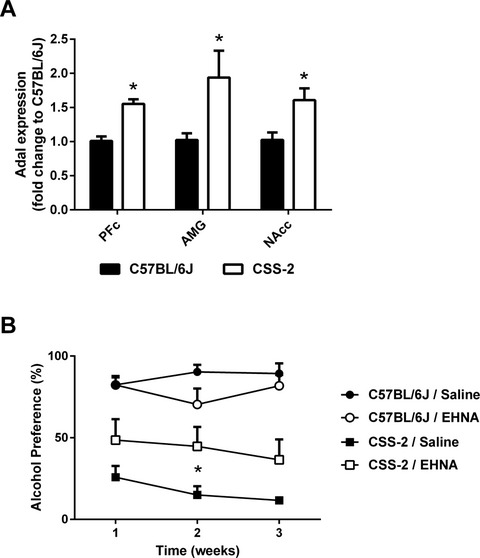
Mice from the chromosome substitution strain 2 (CSS-2) consume less alcohol and with a lower preference compared to C57BL/6J mice. Following up on a previously identified QTL to explain the phenotypic difference between these two mouse strains, this study identified adenosine deaminase-like (Adal) as a quantitative trait gene for their difference in alcohol preference. Expression of Adal was enhanced in CSS-2 mice (A) and pharmacological inhibition of adenosine deaminase using EHNA selectively increased alcohol preference in CSS-2 mice (B).
Cell and Molecular Biology
Determinants of Blood Brain-Derived Neurotrophic Factor Blood Levels in Patients with Alcohol Use Disorder
- Pages: 1280-1287
- First Published: 09 May 2017
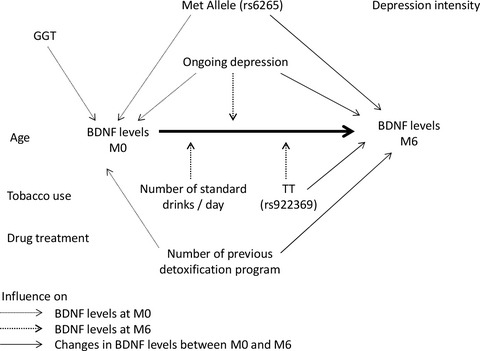
Blood Brain Derived Neurotrophic Factor (BDNF) levels are influenced by several factors including addiction, depression and genetic polymorphisms, leading to widely varying results. We assessed 227 patients with alcohol dependence involved in a detoxification program, at baseline and after a follow-up of six months Low serum BDNF levels were associated with characteristics related to alcohol consumption and mood disorders, and variants of the BDNF gene. The factors which most strongly influenced changes in serum BDNF levels following alcohol weaning were variants of the BDNF gene and ongoing depression.
Evidence of Altered Mitochondrial Protein Expression After Chronic Ethanol Consumption in the Aged Estrogen-Deficient Female Rat Heart
- Pages: 1288-1297
- First Published: 19 May 2017
Neuroscience
Chronic Ethanol During Adolescence Impacts Corticolimbic Dendritic Spines and Behavior
- Pages: 1298-1308
- First Published: 14 June 2017
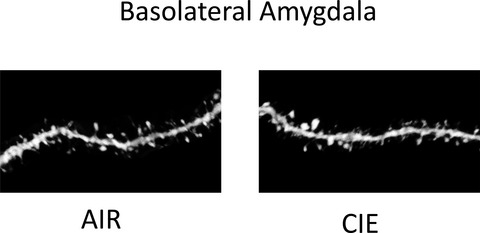
The neural and behavioral consequences of alcohol exposure during adolescence remains incomplete. Here, we examined the neurobehavioral impact of adolescent chronic intermittent EtOH (CIE) vapor exposure in C57BL/6J Thy1-EGFP mice. Exposure to CIE during adolescence altered dendritic spine density and morphology in infralimbic (IL) and basolateral amygdala (BLA) neurons, in parallel with a set of behavioral alterations. Together, these data add to growing evidence that key corticolimbic circuits are vulnerable to the effects of alcohol during adolescence, with lasting, potentially detrimental, consequences for behavior.
Epidemiology, Diagnosis and Comorbidity
A 5-Year Follow-Up of a Cohort of Italian Alcoholics: Hospital Admissions and Overall Survival
- Pages: 1309-1318
- First Published: 20 April 2017
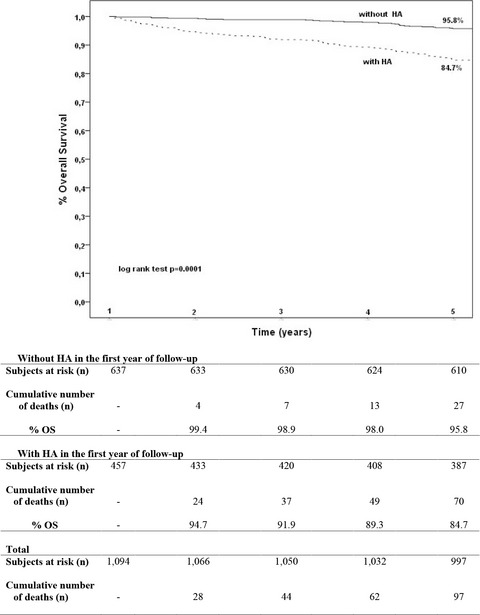
The figure shows the survival curves for 1,094 newly diagnosed alcoholics alive at the end of 1st year of follow-up in the Florence cohort 1997 to 2001, according to new Hospital Admissons (HA) occurred in the 1st year of follow-up (yes vs. no). Survival rate in the following years was lower in admitted than in never-admitted alcoholics (84.7% vs. 95.8%;p=0.0001), with an increased risk of dying by about 3.5 times, showing that early hospitalization significantly predicts vital status at 5 years.
Age-Specific Prevalence of Binge and High-Intensity Drinking Among U.S. Young Adults: Changes from 2005 to 2015
- Pages: 1319-1328
- First Published: 01 June 2017

Between 2005 and 2015 among US young adults, participation in binge (5+ drinks per occasion) and high-intensity (10+, 15+ drinks per occasion) drinking was highest for individuals aged 21/22 to 25/26. Binge and high-intensity drinking generally decreased for individuals in their early 20s, remained somewhat stable during their mid-20s, and increased at the end of young adulthood (ages 29/30). Trends were generally similar for men and women, but increases were observed at earlier ages for women than men.
Behavior, Treatment and Prevention
A Prospective Comparison of How the Level of Response to Alcohol and Impulsivity Relate to Future DSM-IV Alcohol Problems in the COGA Youth Panel
- Pages: 1329-1339
- First Published: 25 April 2017
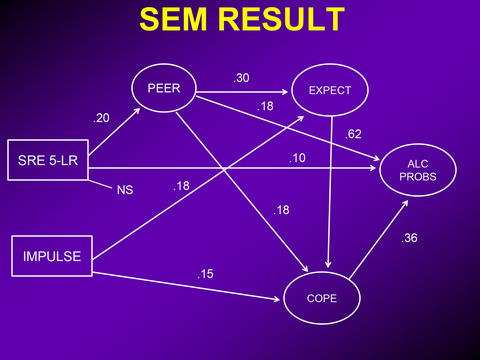
The structural equation model from 1,028 subjects demonstrates relationships between impulsivity and levels of response (LR) to alcohol at age 19; peer drinking, alcohol expectancies and drinking to cope at 21; and the number of DSM-IV alcohol problems in the prior 2 years at 23. Only LR directly predicted alcohol problems and was partially mediated by peer drinking. Impulsivity related to later problems primarily through expectancies. Thus, efforts to prevent alcohol problems might emphasize different pathways depending on someone's vulnerability.
Findings from the Families on Track Intervention Pilot Trial for Children with Fetal Alcohol Spectrum Disorders and Their Families
- Pages: 1340-1351
- First Published: 25 April 2017

This pilot trial evaluated a multi-component intervention program called Families on Track, which was designed to prevent secondary conditions in children with fetal alcohol spectrum disorders (FASD) and improve family adaptation. Children with FASD and their families who completed the Families on Track Program displayed greater improvements in multiple child and caregiver outcomes relative to families who received comprehensive assessment and community referrals.
Predischarge Injectable Versus Oral Naltrexone to Improve Postdischarge Treatment Engagement Among Hospitalized Veterans with Alcohol Use Disorder: A Randomized Pilot Proof-of-Concept Study
- Pages: 1352-1360
- First Published: 12 June 2017
Association of Anticipated and Laboratory-Derived Alcohol Stimulation, Sedation, and Reward
- Pages: 1361-1369
- First Published: 11 May 2017

Laboratory alcohol challenges are the “gold standard” for obtaining accurate measurements of subjective alcohol stimulation, sedation, and reward, but are time- and resource-intensive. This study showed that self-reported anticipated alcohol stimulation, sedation, and reward (liking and wanting) strongly predicted corresponding laboratory-derived responses measured during a controlled alcohol challenge in adults (N = 106). These data indicate that anticipated alcohol effects may serve as a proxy for subjective alcohol responses in situations where laboratory-derived alcohol response measurement is not feasible.
Aripiprazole Suppression of Drinking in a Clinical Laboratory Paradigm: Influence of Impulsivity and Self-Control
- Pages: 1370-1380
- First Published: 11 May 2017
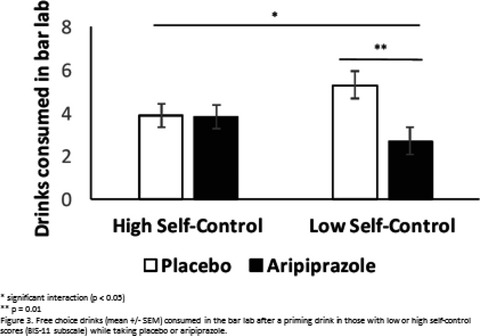
This study showed that the dopamine-stabilizing medication aripiprazole, compared to placebo, reduced drinking in a bar lab experiment but mostly in those with higher impulsivity and lower “self-control”. Participants met DSM IV criteria for Alcohol Use Disorder but were non-treatment seeking. They took active aripiprazole or placebo for 8 days prior to being given a drink of their chosen liquor and then were allowed to buy ($2 a drink bar credit) up to eight additional drinks or keep the money.
Letters to the Editor
Letter to Editor in Response to Johnson's Commentary (2017) on the Witkiewitz and Colleagues (2017) Article
- Pages: 1381-1382
- First Published: 04 May 2017
FDA and EMA Need Homology on Alcohol Outcome Measures—Semper: Simplicitas est purius modum
- Pages: 1383-1384
- First Published: 04 May 2017





